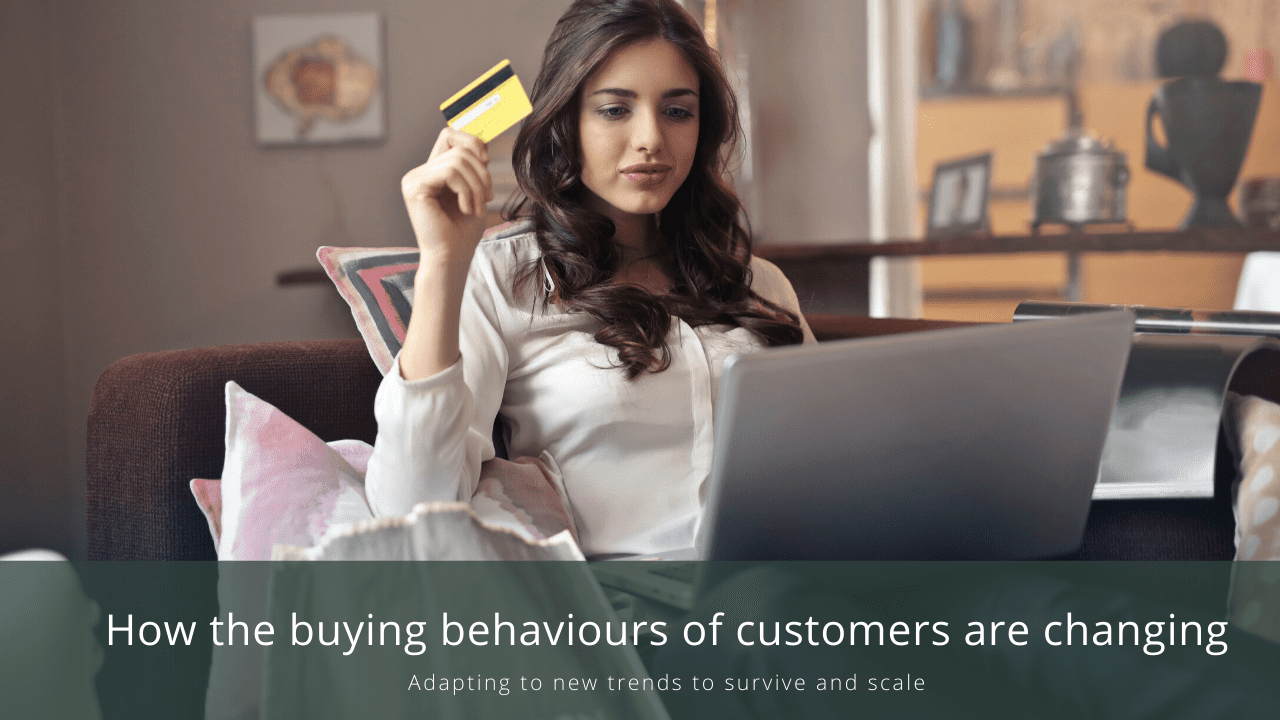The purchasing preferences of consumers can change frequently. However, their buying behaviour is generally more resistant to change. It takes something significant to create this kind of a mental shift.
When consumers’ instincts are transformed, buying behaviour changes, which means they’ve evolved on a subconscious level. Havard professor, Gerald Zaltman, believes that over 95% of purchasing decisions are made in our subconscious mind. When this happens, new marketing trends emerge, and companies that don’t keep up get left behind.
The internet has made an enormous impact on modern buying behaviour in a number of ways. Every aspiring business should know how and why these changes occurred, and how to adapt.
The ever-evolving digital age


Consumer buying behaviour changed for quite a few reasons, although most of them were born from the internet. Our increasingly busy lives called for faster solutions which have become the norm. Today, there is an increasing lean towards the ‘
The internet has given us this as well, but not without some drawbacks. The sheer volume of information available to us online leaves a lot of room for error. This means customers have learned to appreciate accurate content and begun to value corporate trust.
Additionally, social media has played a large part in changing behavio
Emerging trends in consumer buying behaviour


These factors have led to customers expecting more from businesses. People find it necessary to trust a corporation and this has led to the most prominent developments. They need to know that what they’re seeing or reading is precise and dependable. It also has to be up-to-date, which means companies are expected to provide new content regularly.
We explore how PR helps build trust.
B2B purchasers, in particular, are relying more on content, with most going through 90% of the buying process before speaking to a vendor. A white paper sponsored by LinkedIn indicated 84% of decision-makers use social media to support their choices. Online professional networks are now B2B customers’ preferred resource in the final buying stages. The research shows how these consumers feel more confident in making decisions that have been informed by their peers.
Subsequent studies show that not many B2B customers see sales representatives as a valuable resource these days. Some sectors ranked them as less useful than the likes of information websites and dedicated forums.
Do you sometimes ask yourself if your hard selling days over?
Communication is the key


Businesses are now found more frequently through content than through traditional marketing methods. Therefore, companies need to regularly create engaging and informative content, regardless of format. It’s also vital for brands to communicate their message effectively in their marketing efforts.
Most marketers agree that social media, in particular, is crucial to their strategy. The Social Media Examiner discovered that more than 40% feel they can accurately measure the ROI of such activities. Brands can use social media as one of the mediums for provoking an emotional response.
We explore social media marketing trends and strategies.
Another important element is the long-form content- articles, blogs and reports. Companies need to use content to form strong connections with their target audience. Content is no longer just a cog in the sales process. It has to be well-written and researched. It is now competing against thousands of competitors for consumers’ attention, so it has to stand out.
We share tips on writing like a content pro.
Consumers’ changing buying behaviours have disrupted marketing trends and are here to stay. The key to engaging potential customers is creating a unique buying journey. While developing superb content is a necessity, it should be created based on informed, strategic decisions. Companies that adapt will benefit for years to come, and steer ahead in the cutthroat competition.
Speak to a SYNC consultant to learn more about emerging trends in PR and marketing. Drop us an email at [email protected]
This article has been updated on 10 June 2020

